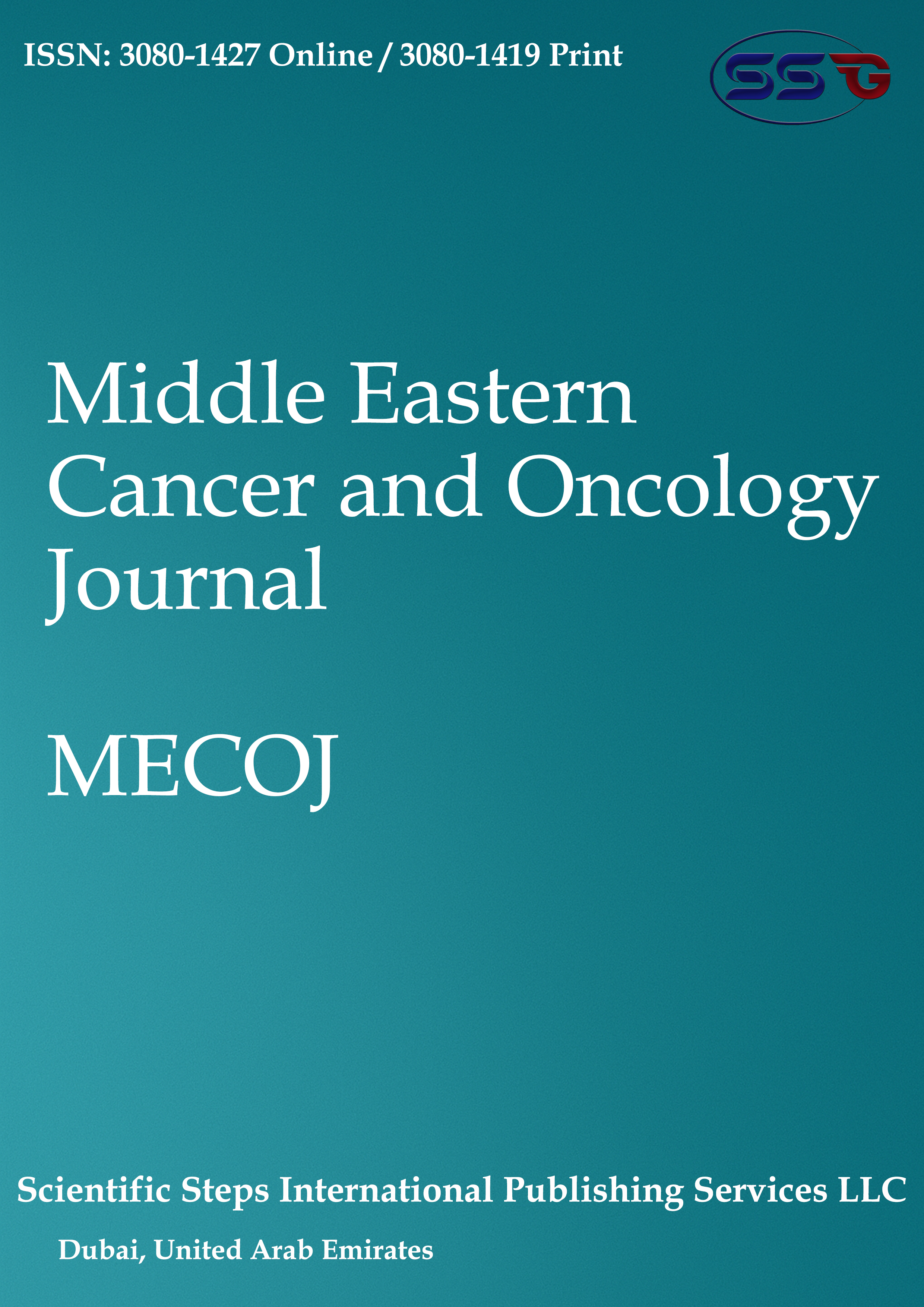Cardio-Oncology: Bridging the Gap Between Cardiovascular Health and Cancer Care
- Authors
-
-
Hadi N Skouri
Division of Cardiology, Sheikh Shakbout Medical City-Mayo Clinic, Abu Dhabi, United Arab Emirates
-
- Keywords:
- Cardio-oncology, Cardiotoxicity, Chemotherapy-Cardiotoxicity, Radiotherapy-Cardiotoxicity, Biomarkers
- Abstract
-
Cardio-oncology, an emerging subspecialty, is the study of the intersection of cardiovascular disease (CVD) and cancer. This field focuses on the prevention, diagnosis, and management of cardiovascular complications arising from cancer therapies. Given the increasing prevalence of cardiotoxicity induced by chemotherapy, targeted therapy, immunotherapy, and radiotherapy, this field plays a critical role in improving patient outcomes. Cardiotoxicity is characterized by a range of physiological manifestations, including cardiac dysfunction or heart failure, hypertension, arrhythmias, venous and arterial thromboembolism, pericardial disease, and pulmonary hypertension. Furthermore, the administration of certain pharmaceutical agents has been demonstrated to induce metabolic disturbances, which can manifest as an increased propensity for the development of diabetes or dyslipidemia, or the exacerbation of preexisting conditions. Chemotherapy-related cardiac dysfunction (CTRCD) manifests in two primary forms: type I, characterized by irreversible myocardial cell damage (e.g., anthracycline-induced cardiotoxicity), and type II, involving reversible myocardial dysfunction (e.g., trastuzumab-induced cardiotoxicity). Biomarkers, such as cardiac troponin (cTn) and natriuretic peptides (NP), play a pivotal role in the early detection of heart failure. Advanced imaging techniques, including cardiac MRI and speckle-tracking echocardiography, have been shown to enhance monitoring capabilities. Radiotherapy has been shown to have deleterious effects on cardiovascular health, contributing to the development of conditions such as coronary artery disease, valvular dysfunction, pericardial disease, and myocardial fibrosis. This review underscores the importance of multidisciplinary collaboration, early screening, and monitoring through innovative diagnostic tools to mitigate cardiovascular risks in cancer patients, ultimately enhancing survivorship and quality of life.
- References
-
Abdul-Rahman, T., Dunham, A., Huang, H., Bukhari, S. M. A., Mehta, A., Awuah, W. A., Ede-Imafidon, D., Cantu-Herrera, E., Talukder, S., Joshi, A., Sundlof, D. W., & Gupta, R. (2023). Chemotherapy Induced Cardiotoxicity: A State of the Art Review on General Mechanisms, Prevention, Treatment and Recent Advances in Novel Therapeutics. Current Problems in Cardiology, 48(4), 101591. https://doi.org/10.1016/j.cpcardiol.2023.101591
Ganatra, S., Chatur, S., & Nohria, A. (2020). How to Diagnose and Manage Radiation Cardiotoxicity. JACC: CardioOncology, 2(4), 655–660. https://doi.org/10.1016/j.jaccao.2020.07.010
Hayek, S. S., Ganatra, S., Lenneman, C., Scherrer-Crosbie, M., Leja, M., Lenihan, D. J., Yang, E., Ryan, T. D., Liu, J., Carver, J., Mousavi, N., O’Quinn, R., Arnold, A., Banchs, J., Barac, A., & Ky, B. (2019). Preparing the Cardiovascular Workforce to Care for Oncology Patients. Journal of the American College of Cardiology, 73(17), 2226–2235. https://doi.org/10.1016/j.jacc.2019.02.041
Huang, W., Xu, R., Zhou, B., Lin, C., Guo, Y., Xu, H., & Guo, X. (2022). Clinical Manifestations, Monitoring, and Prognosis: A Review of Cardiotoxicity After Antitumor Strategy. Frontiers in Cardiovascular Medicine, 9. https://doi.org/10.3389/fcvm.2022.912329
Koutsoukis, A., Ntalianis, A., Repasos, E., Kastritis, E., Dimopoulos, M.-A., & Paraskevaidis, I. (2018). Cardio-oncology: A Focus on Cardiotoxicity. European Cardiology Review, 13(1), 64. https://doi.org/10.15420/ecr.2017:17:2
Li, G., Zhang, L., & Liu, M. (2023). Evolving field of cardio-oncology. Cancer Pathogenesis and Therapy, 1(2), 141–145. https://doi.org/10.1016/j.cpt.2023.02.002
Narowska, G., Gandhi, S., Tzeng, A., & Hamad, E. A. (2023). Cardiovascular Toxicities of Radiation Therapy and Recommended Screening and Surveillance. Journal of Cardiovascular Development and Disease, 10(11), 447. https://doi.org/10.3390/jcdd10110447
Pizzino, F., Vizzari, G., Bomzer, C. A., Qamar, R., Carerj, S., Zito, C., & Khandheria, B. K. (2014). Diagnosis of Chemotherapy-Induced Cardiotoxicity. Journal of Patient-Centered Research and Reviews, 1(3), 121–127. https://doi.org/10.17294/2330-0698.1025
Tetterton-Kellner, J., Jensen, B. C., & Nguyen, J. (2024). Navigating cancer therapy induced cardiotoxicity: From pathophysiology to treatment innovations. Advanced Drug Delivery Reviews, 211, 115361. https://doi.org/10.1016/j.addr.2024.115361
- Published
- 2025-05-28
- Section
- Letters/Short Reports/Communications
- Categories
- License
-
Copyright (c) 2025 Hadi N Skouri

This work is licensed under a Creative Commons Attribution 4.0 International License.

